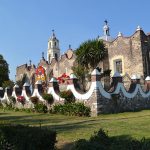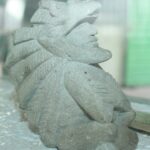The Tlapacoya Archaeological Zone is one of several important ancient excavation and pyramid sites just across the City line near Santa Catarina Yecahuízotl in Tláhuac. In Ixtapaluca, the site is at the foot of the Tlapacoya hill. This is popularly known as the Cerro del Elefante, that is, Elephant Hill for its resemblance to a pachyderm. The site was on the shore of the ancient Lake Chalco. The site is usually reached from the México-Puebla highway. The construction of the highway actually led to the discovery of the site in the 1950s.
The site is best known for what are called “Tlapacoya figurines.” These are remarkably detailed, even personable, clay figurines which date from between 1500 and 300 BCE. They are some of the most beloved works from the Pre-classic period. The site is also a hotbed of controversy. Many experts believe the site shows strong influence of the Olmec civilization. They almost certainly conducted trade with the Olmecs. They’re generally considered to have been part of the Tlatilco culture, long considered the earliest in the Valley of Mexico.
But the site also revealed the remains of human beings dating back some 25,000 years. This cast strong doubts on the long held belief that the Clovis culture (dated to between 11,500 – 11,000 years ago) was the oldest in the Americas. The Tlapacoya site casts doubt, therefore, on early migrations to the entire continent.
The Cerro de Elefante park is the site of one of the giant sculptures of Jorge Marín, an artist who, in particular, represents commedia dell’arte themes in often monumentally-sized works. The ecological park provides a mountainous desert environment to be explored, and relatively easy hiking and mountain-biking trails. Views are often spectacular.

6.37 kms.

9.21 kms.

10.05 kms.